As a designer who has had an interior design business for 39 years, I find many of the AI tools don’t apply to my level of expertise. Many AI tools cater to a layperson and a new designer that needs a lot of hand-holding. Where I find AI useful to me is on the business management side of the equation.
For veteran interior designers, the integration of AI can significantly enhance business management by streamlining processes such as site measurements, client communication, team management, and more.
What AI Can Do For The Interior Design Business
Here’s how AI can help:
1. Streamlining Site Measurements and Space Planning
AI Tools:
- Matterport
- Canvas by Occipital
How It Works:
- Matterport: This tool uses AI to create 3D scans of physical spaces and will be a big time saver for your interior design business. With a Matterport camera, you can capture accurate measurements and generate detailed 3D models of a client’s space. The AI processes the data to produce floor plans, 3D tours, and detailed room dimensions.
- Canvas by Occipital: Using an iPad with a Structure Sensor, Canvas scans rooms to create accurate 3D models. The AI automatically converts these scans into editable CAD models, saving time and improving accuracy for your interior design business.
Benefits:
- Reduces time spent on manual measurements.
- Ensures high accuracy in space planning.
- Provides detailed 3D models for better visualization and planning.
2. Enhancing Client Communication and Collaboration
AI Tools:
- Tact.ai
- Crystal Knows
How It Works:
- Tact.ai: This AI-powered tool integrates with your CRM to streamline communication. It can automatically log client interactions, schedule follow-ups, and remind you of important tasks, ensuring no detail is overlooked.
- Crystal Knows: This AI tool analyzes communication styles and provides insights on how to tailor your messages to each client’s personality. It can help you craft emails and messages that are more likely to resonate with clients, improving communication effectiveness.
Benefits:
- Automates routine communication tasks.
- Personalizes client interactions.
- Enhances client satisfaction through better communication.
3. Managing Teams and Workflow for Your Interior Design Business
AI Tools:
- Monday.com
- Asana
How It Works:
- Monday.com: This project management tool uses AI to optimize workflows. It can assign tasks based on team members’ strengths, predict project timelines, and identify potential bottlenecks. The AI can also automate repetitive tasks, such as status updates and reminders.
- Asana: Asana’s AI features help in tracking project progress and ensuring deadlines are met. It can analyze past projects to predict future project timelines and resource needs, helping you allocate resources more efficiently.
Benefits:
- Improves team collaboration and productivity.
- Automates project tracking and management tasks.
- Provides data-driven insights for better resource allocation.
4. Financial Management and Budgeting
AI Tools:
- QuickBooks with AI
- Fyle
How It Works:
- QuickBooks with AI: QuickBooks uses AI to automate bookkeeping tasks, such as expense tracking, invoicing, and financial reporting. It can categorize expenses, track income, and provide real-time financial insights.
- Fyle: This expense management tool uses AI to automatically scan and categorize receipts, track expenses, and ensure compliance with company policies. It integrates with accounting software to streamline financial management.
Benefits:
- Reduces time spent on manual bookkeeping.
- Provides real-time financial insights.
- Ensures accurate expense tracking and compliance.
5. Market Analysis and Trend Prediction
AI Tools:
- TrendBook
- Artificial Intelligence Design (AID)
How It Works:
- TrendBook: This tool uses AI to analyze global design trends and forecast future trends for your interior design business. It can provide insights into popular styles, materials, and color schemes, helping you stay ahead of the curve.
- AID: AID uses machine learning to analyze design trends and client preferences. It can predict upcoming trends and suggest design elements that align with market demands for your interior design business.
Benefits:
- Helps in staying updated with the latest design trends.
- Provides data-driven insights for strategic planning for your interior design business.
- Enhances competitive edge by anticipating market demands.
Practical Workflow Integration
Initial Consultation and Site Measurement
- Tool: Matterport or Canvas by Occipital
- Process: Use AI tools to scan the client’s space during the initial consultation. Generate accurate 3D models and measurements to streamline space planning.
Client Communication
- Tool: Tact.ai and Crystal Knows
- Process: Use Tact.ai to manage communication schedules and automate follow-ups. Utilize Crystal Knows to tailor your communication style to each client, enhancing their experience.
Project Management
- Tool: Monday.com or Asana
- Process: Set up projects in Monday.com or Asana. Use AI features to assign tasks, track progress, and identify potential issues. Automate status updates and reminders to keep the team aligned.
Financial Management
- Tool: QuickBooks with AI and Fyle
- Process: Automate bookkeeping with QuickBooks, ensuring accurate financial tracking and reporting. Use Fyle to manage expenses and integrate with QuickBooks for seamless financial management.
Market Analysis
- Tool: TrendBook and AID
- Process: Regularly review insights and trend predictions from TrendBook and AID. Use this data to inform design decisions and stay ahead of market trends.
Conclusion
For veteran interior designers, AI offers powerful tools to enhance business management. By leveraging AI for site measurements, client communication, team management, financial tracking, and market analysis, you can streamline operations, improve client satisfaction, and stay competitive in the evolving design industry. Embracing AI not only enhances efficiency but also frees up more time for creative and strategic tasks, allowing you to focus on what you do best: creating beautiful, functional spaces.
Other posts you might enjoy:
Your Interior Design Business – 8 Benefits Of Using AI Technology





